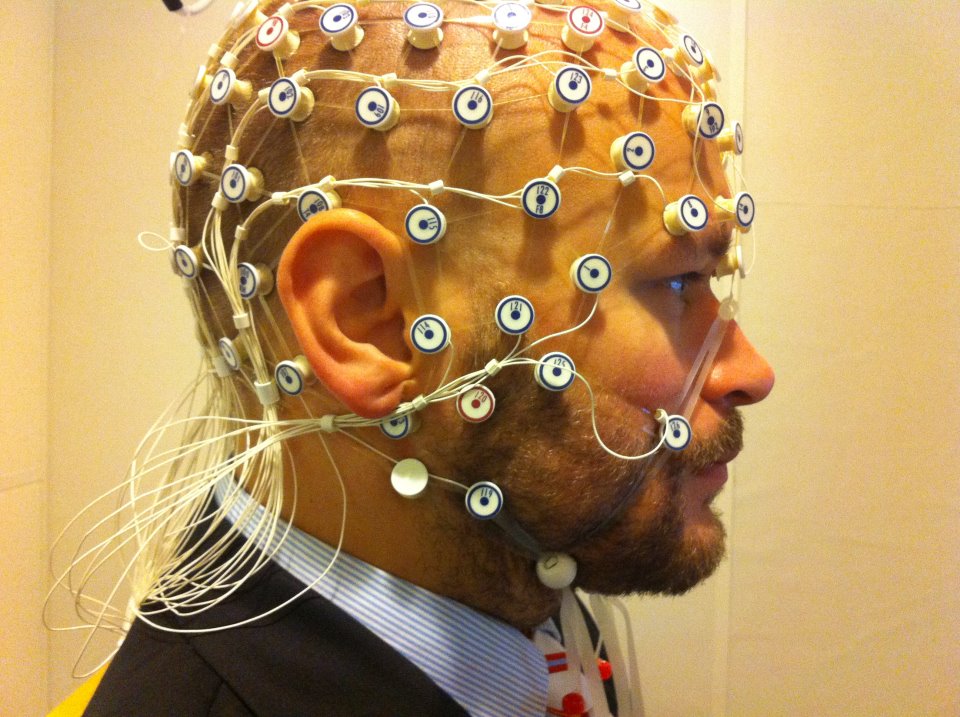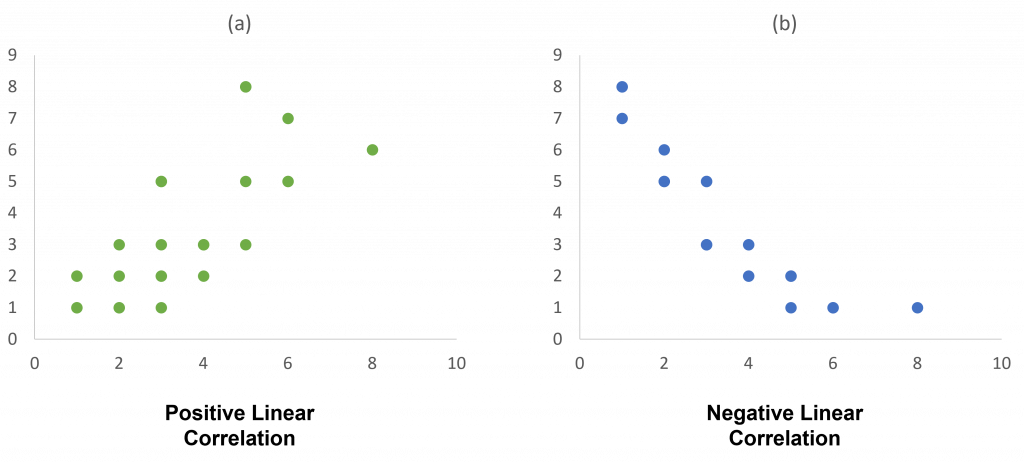Descriptive Research
Case Study: Sometimes the data in a descriptive research project are based on only a small set of individuals, often only one person or a small group. These research designs are known as case studies, which are descriptive records of the experiences and behaviour of one individual or a small group of people. Sometimes case studies involve ordinary individuals. Developmental psychologist Jean Piaget observed his own children. More frequently, case studies are conducted on individuals who have unusual or abnormal experiences. The assumption is that by carefully studying these individuals, we can learn something about human nature. Case studies have a distinct disadvantage in that, although they allow us to get an idea of what is currently happening, that is usually limited to static pictures. Although descriptions of particular experiences may be interesting, they are not always transferable to other individuals in similar situations. They are also time consuming and expensive as many professionals are involved in gathering the information.
Observations: Another type of descriptive research is known as observation. When using naturalistic observation, psychologists observe and record behavior that occurs in everyday settings. For instance, a developmental psychologist might watch children on a playground and describe what they say to each other. However, naturalistic observations do not allow the researcher to have any control over the environment.
Laboratory observation: Unlike naturalistic observation, laboratory observation is conducted in a setting created by the researcher. This permits the researcher to control more aspects of the situation. One example of laboratory observation involves a systematic procedure known as the strange situation test, which you will learn about in chapter three. Concerns regarding laboratory observations are that the participants are aware that they are being watched, and there is no guarantee that the behavior demonstrated in the laboratory will generalize to the real world.

Survey: In other cases the data from descriptive research projects come in the form of a survey, which is a measure administered through either a verbal or written questionnaire to better understand the beliefs or behaviours of a sample of people of interest. The people chosen to participate in the research, known as the sample, are selected to be representative of all the people that the researcher wishes to know about called the population. A representative sample would include the same percentages of males, females, age groups, ethnic groups, and socioeconomic groups as the larger population.
Surveys gather information from many individuals in a short period of time, which is their greatest benefit. Additionally, surveys are inexpensive to administer. However, surveys typically yield surface information on a wide variety of factors, but may not allow for in-depth understanding of human behaviour. Another problem is that respondents may lie because they want to present themselves in the most favourable light, known as social desirability. They also may be embarrassed to answer truthfully or are worried that their results will not be kept confidential. Additionally, questions can be perceived differently than intended.
Interviews: Rather than surveying participants, they can be interviewed, which means they are directly questioned by a researcher. Interviewing participants on their behaviours or beliefs can solve the problem of misinterpreting the questions posed on surveys. The examiner can explain the questions and further probe responses for greater clarity and understanding. Although this can yield more accurate results, interviews take longer and are more expensive to administer than surveys. Participants can also demonstrate social desirability, which will affect the accuracy of the responses.
Psychophysiological assessment: Researchers may also record psychophysiological data, such as heart rate, hormone levels, or brain activity, to help explain development. These measures may be recorded by themselves or in combination with behavioural data to better understand the bidirectional relations between biology and behaviour. Special equipment has been developed to allow researchers to record the brain activity of very young and very small research subjects. One manner of understanding associations between brain development and behavioural advances is through the recording of event-related potentials (ERPs). ERPs are recorded by fitting a research participant with a stretchy cap that contains many small sensors or electrodes. These electrodes record tiny electrical currents on the scalp of the participant in response to the presentation of stimuli, such as a picture or a sound.

The use of ERPs has provided important insight as to how infants and children understand the world around them. Webb, Dawson, Bernier, and Panagiotides (2006) examined face and object processing in children with autism spectrum disorders, those with developmental delays, and those who were typically developing. The children wore electrode caps and had their brain activity recorded as they watched still photographs of faces of either their mother or a stranger, as well as objects, including those that were familiar or unfamiliar to them. The researchers examined differences in face and object processing by group by observing a component of the brainwaves. Findings suggest that children with autism are in some way processing faces differently than typically developing children and those with more general developmental delays.
Secondary/content analysis: This approach involves analyzing information that has already been collected or examining documents or media to uncover attitudes, practices, or preferences. There are a number of data sets available to those who wish to conduct this type of research. For example, U. S. Census Data is available and widely used to look at trends and changes taking place in the United States. The researcher conducting secondary analysis does not have to recruit subjects, but does need to know the quality of the information collected in the original study.
Conditional Research
In contrast to descriptive research, which is designed primarily to provide static pictures, correlational research involves the measurement of two or more relevant variables and an assessment of the relationship between or among those variables. For instance, the variables of height and weight are systematically related (correlated) because taller people generally weigh more than shorter people.
The Pearson Correlation Coefficient, symbolized by the letter r, is the most common statistical measure of the strength of linear relationships among variables. The value of the correlation coefficient ranges from r= –1.00 to r = +1.00. The strength of the linear relationship is indexed by the distance of the correlation coefficient from zero (its absolute value). For instance, r = –.54 is a stronger relationship than r= +.30, and r = +.72 is a stronger relationship than r = –.57. The direction of the linear relationship is indicated by the sign of the correlation coefficient. Positive values of r (such as r = +.54 or r = +.67) indicate that the relationship is positive (i.e., the pattern of the dots on the scatter plot runs from the lower left to the upper right), whereas negative values of r (such as r = –.30 or r = –.72) indicate negative relationships (i.e., the dots run from the upper left to the lower right).
When the straight line indicates that individuals who have high values for one variable also tend to have high values for the other variable, as in part (a), the relationship is said to be positive correlation. Examples of positive correlations include those between education and income and between age and mathematical abilities in children. In each case, people who score higher on one of the variables also tend to score higher on the other variable. Negative correlations, in contrast, as shown in part (b), occur when high values for one variable tend to be associated with low values for the other variable. Examples of negative correlations include those between the age of a child and the number of diapers the child uses and between practice and errors made on a learning task. In these cases, people who score higher on one of the variables tend to score lower on the other variable.

An important limitation of correlational research design is that it cannot be used to draw conclusions about the causal relationships among the measured variables. Consider, for instance, a researcher who has hypothesized that viewing violent behaviour will cause increased aggressive play in children. He has collected, from a sample of fourth-grade children, a measure of how much violent television each child views during the week, as well as a measure of how aggressively each child plays. The researcher discovers a positive correlation between the two measured variables. Although this positive correlation appears to support the hypothesis, it cannot be taken to indicate that viewing violent television causes aggressive behaviour as there are other possible explanations. One alternative is that children who behaved aggressively at school want to watch violent television shows. Still another possible explanation for the observed correlation is that it has been produced by the presence of a third variable.

A third variable is a variable that is not part of the research hypothesis but produces the observed correlation between the two under study. In our example, a potential third variable is the discipline style of the children’s parents. Parents who use a harsh and punitive discipline style may produce children who both like to watch violent television and who behave aggressively in comparison to children whose parents use less harsh discipline.
For this reason, we are left with the basic limitation of correlational research: Correlation does not demonstrate causation. It is important that when you read about correlational research projects, you keep in mind the possibility of third variables.
Strengths and limitations: Correlational research can be used when experimental research is not possible because the variables cannot be manipulated or it would be unethical to use an experiment. Correlational designs also have the advantage of allowing the researcher to study behaviour as it occurs in everyday life. We can also use correlational designs to make predictions. For instance, we can predict from the scores on a battery of tests the success of job trainees during a training session. However, we cannot use such correlational information to determine whether one variable caused another variable. For that, researchers rely on an experiment.
Experimental Research
The goal of the experimental method is to provide more definitive conclusions about the causal relationships among the variables in a research hypothesis than what is available from correlational research. Experiments are designed to test hypotheses, or specific statements about the relationship between variables. Experiments are conducted in a controlled setting in an effort to explain how certain factors or events produce outcomes. A variable is anything that changes in value. In experimental research design, the variables of interest are called the independent variable and the dependent variable. The independent variable is the causing variable that is created or manipulated by the experimenter. The dependent variable is a measured variable that is expected to be influenced by the experimental manipulation.
A good experiment randomly assigns participants to at least two groups that are compared. The experimental group receives the treatment under investigation, while the control group does not receive the treatment the experimenter is studying as a comparison. For instance, to assess whether violent TV affects aggressive behaviour, the experimental group might view a violent television show, while the control group watches a non-violent show. Additionally, experimental designs control for extraneous variables, or variables that are not part of the experiment that could inadvertently effect either the experimental or control group, thus distorting the results.
Despite the advantage of determining causation, experiments do have limitations. One is that they are often conducted in laboratory situations rather than in the everyday lives of people. Therefore, we do not know whether results that we find in a laboratory setting will necessarily hold up in everyday life. Second, and more important, is that some of the most interesting and key social variables cannot be experimentally manipulated because of ethical concerns. If we want to study the influence of abuse on children’s development of depression, these relationships must be assessed using correlational designs because it is simply not ethical to experimentally manipulate these variables. Characteristics of descriptive, correlational, and experimental research designs can be found in Table 1.5.
| Research Design | Goal | Advantages | Disadvantages |
|---|---|---|---|
| Descriptive | To create a snapshot of the current state of affairs |
|
|
| Correlational | To assess the relationships between and among two or more variables |
|
|
| Experimental | To assess the causal impact of one or more experimental manipulations on a dependent variable |
|
|
Test Your Knowledge!

